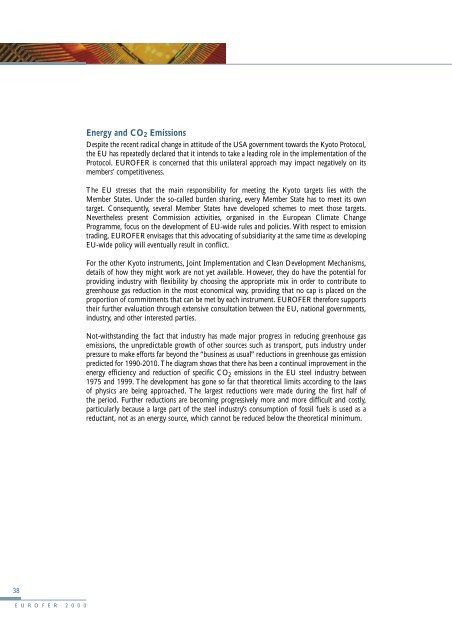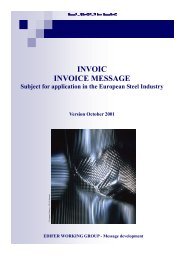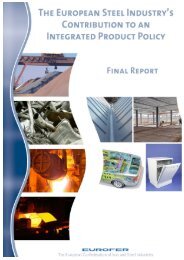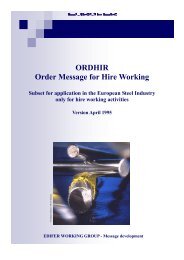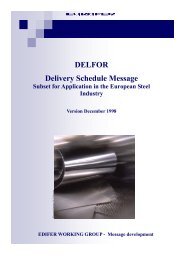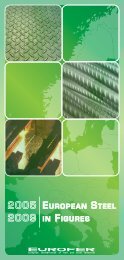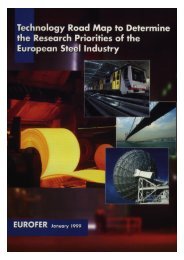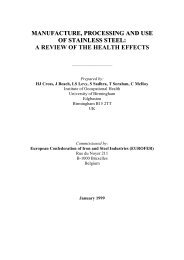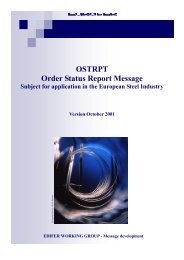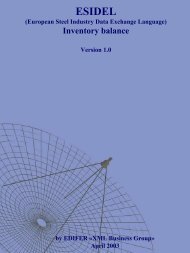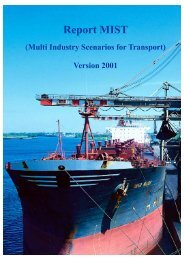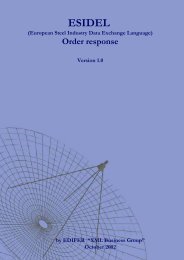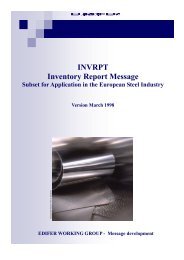Imports - Eurofer
Imports - Eurofer
Imports - Eurofer
You also want an ePaper? Increase the reach of your titles
YUMPU automatically turns print PDFs into web optimized ePapers that Google loves.
38<br />
E U R O F E R 2 0 0 0<br />
Energy and CO2 Emissions<br />
Despite the recent radical change in attitude of the USA government towards the Kyoto Protocol,<br />
the EU has repeatedly declared that it intends to take a leading role in the implementation of the<br />
Protocol. EUROFER is concerned that this unilateral approach may impact negatively on its<br />
members’ competitiveness.<br />
The EU stresses that the main responsibility for meeting the Kyoto targets lies with the<br />
Member States. Under the so-called burden sharing, every Member State has to meet its own<br />
target. Consequently, several Member States have developed schemes to meet those targets.<br />
Nevertheless present Commission activities, organised in the European Climate Change<br />
Programme, focus on the development of EU-wide rules and policies. With respect to emission<br />
trading, EUROFER envisages that this advocating of subsidiarity at the same time as developing<br />
EU-wide policy will eventually result in conflict.<br />
For the other Kyoto instruments, Joint Implementation and Clean Development Mechanisms,<br />
details of how they might work are not yet available. However, they do have the potential for<br />
providing industry with flexibility by choosing the appropriate mix in order to contribute to<br />
greenhouse gas reduction in the most economical way, providing that no cap is placed on the<br />
proportion of commitments that can be met by each instrument. EUROFER therefore supports<br />
their further evaluation through extensive consultation between the EU, national governments,<br />
industry, and other interested parties.<br />
Not-withstanding the fact that industry has made major progress in reducing greenhouse gas<br />
emissions, the unpredictable growth of other sources such as transport, puts industry under<br />
pressure to make efforts far beyond the “business as usual” reductions in greenhouse gas emission<br />
predicted for 1990-2010. The diagram shows that there has been a continual improvement in the<br />
energy efficiency and reduction of specific CO2 emissions in the EU steel industry between<br />
1975 and 1999. The development has gone so far that theoretical limits according to the laws<br />
of physics are being approached. The largest reductions were made during the first half of<br />
the period. Further reductions are becoming progressively more and more difficult and costly,<br />
particularly because a large part of the steel industry’s consumption of fossil fuels is used as a<br />
reductant, not as an energy source, which cannot be reduced below the theoretical minimum.


